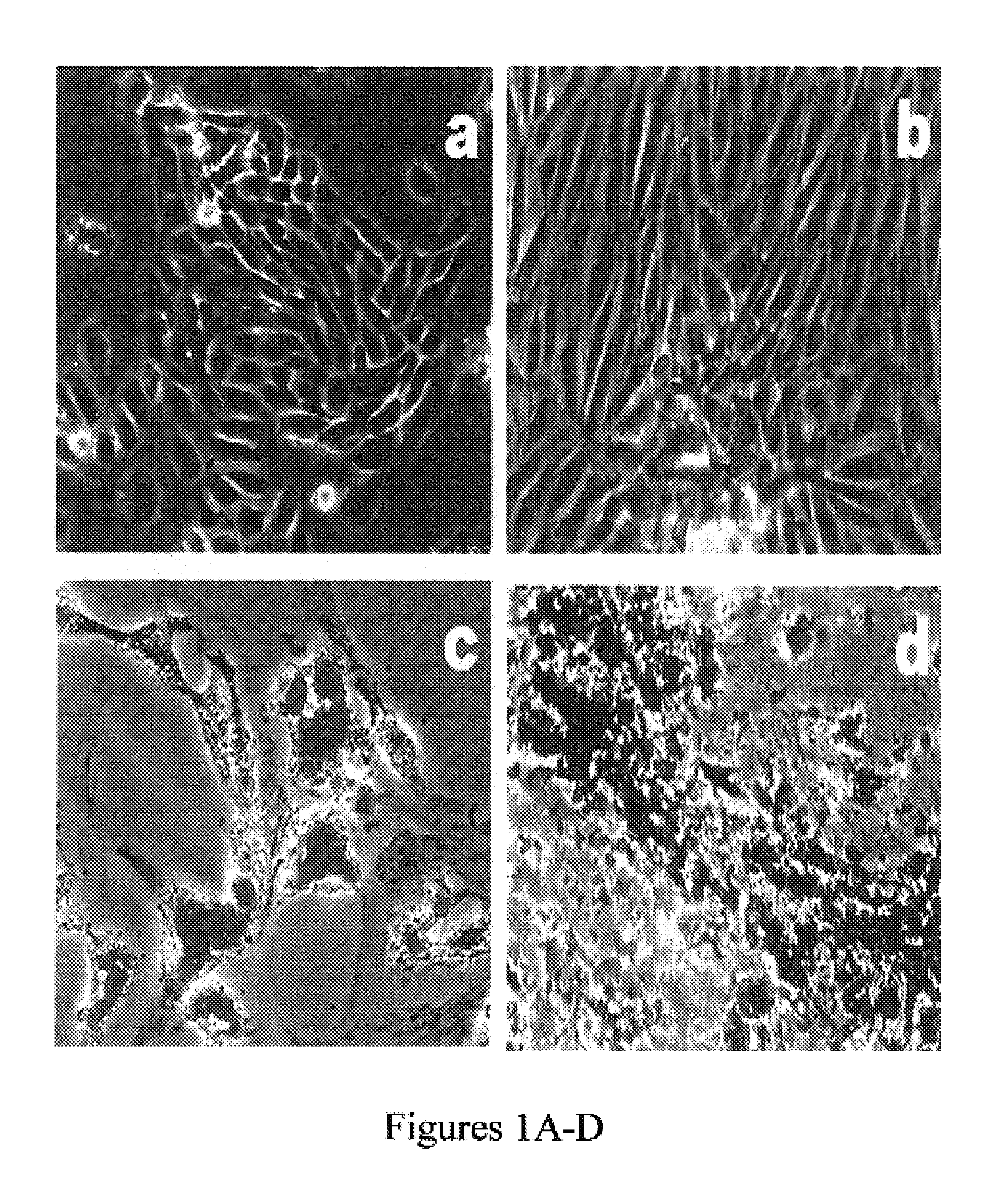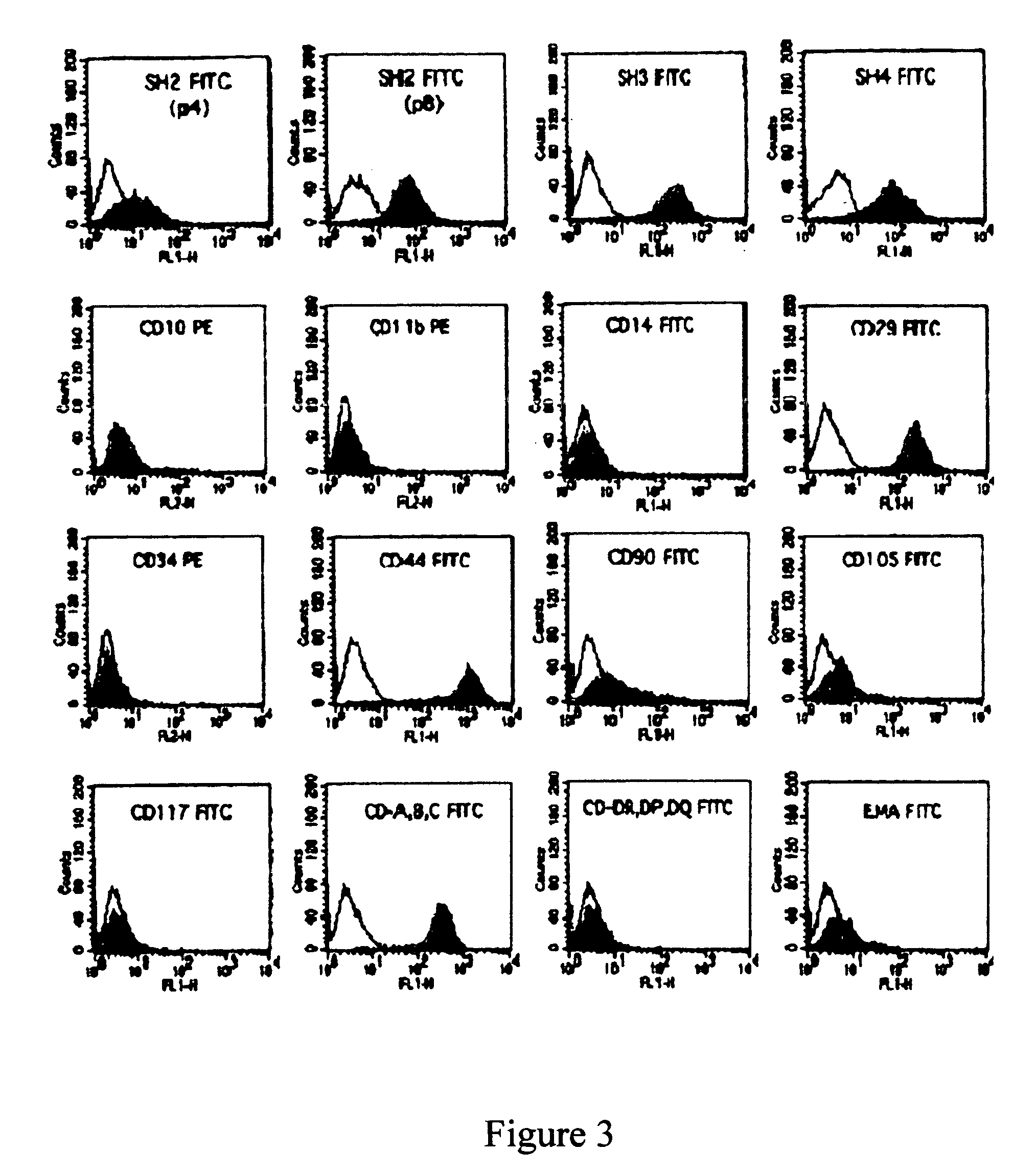Two-stage culture protocol for isolating mesenchymal stem cells from amniotic fluid
a technology of amniotic fluid and culture protocol, which is applied in the field of human stem cells, can solve the problems of not raising ethical issues, increasing contamination possibility, and encouraging illegal termination of pregnancy, so as to increase contamination possibility and encourage illegal termination of pregnancy
- Summary
- Abstract
- Description
- Claims
- Application Information
AI Technical Summary
Benefits of technology
Problems solved by technology
Method used
Image
Examples
Embodiment Construction
[0042]Reference will now be made in detail to the preferred embodiments of the present invention, examples of which are illustrated in the accompanying drawings. Wherever possible, the same reference numbers are used in the drawings and the description to refer to the same or like parts.
[0043]Human mesenchymal stem cells (MSCs) are thought to be multipotent cells that have the potential to differentiate into multiple lineages including bone, cartilage, muscle, tendon, ligament fat and a variety of other connective tissues. Morphologically, MSCs in their undifferentiated state are spindle shaped and resemble fibroblasts. MSCs have been identified mostly in adult bone marrow, while MSCs are also present in both adult and fetal peripheral blood, fetal liver, fetal spleen, placenta and in term umbilical cord blood.
[0044]To date, little is known about whether MSCs are present in human amniotic fluid or not, despite culturing of amniotic fluid cells being a well-established routine proced...
PUM
| Property | Measurement | Unit |
|---|---|---|
| concentration | aaaaa | aaaaa |
| incubating temperature | aaaaa | aaaaa |
| temperature | aaaaa | aaaaa |
Abstract
Description
Claims
Application Information
 Login to View More
Login to View More - R&D
- Intellectual Property
- Life Sciences
- Materials
- Tech Scout
- Unparalleled Data Quality
- Higher Quality Content
- 60% Fewer Hallucinations
Browse by: Latest US Patents, China's latest patents, Technical Efficacy Thesaurus, Application Domain, Technology Topic, Popular Technical Reports.
© 2025 PatSnap. All rights reserved.Legal|Privacy policy|Modern Slavery Act Transparency Statement|Sitemap|About US| Contact US: help@patsnap.com



